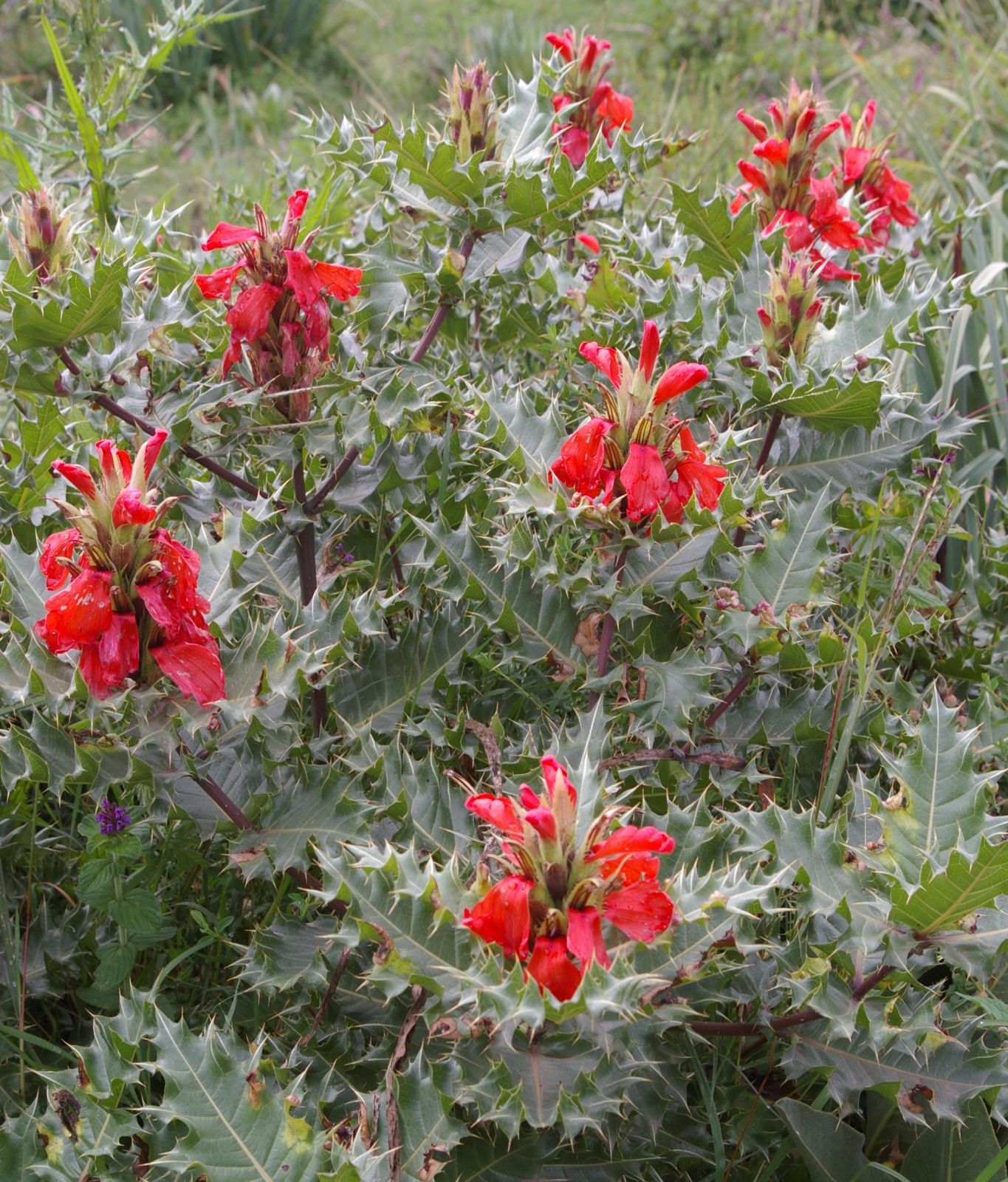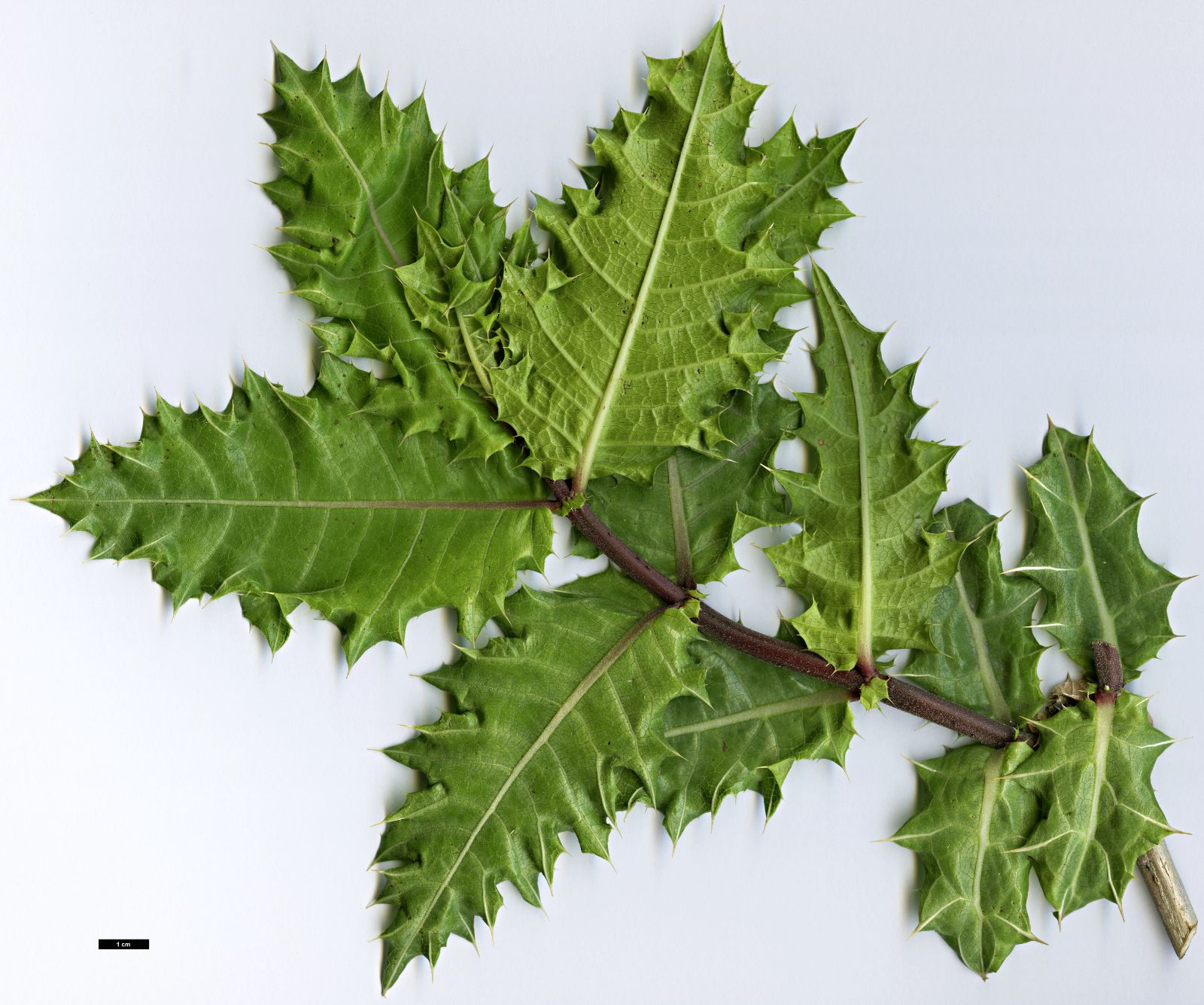Acanthus sennii
Credits
John Grimshaw (2019)
Recommended citation
Grimshaw, J. (2019), 'Acanthus sennii' from the website Trees and Shrubs Online (treesandshrubsonline.
Genus
Other taxa in genus
A shrub from a subterranean rhizome, producing erect stems 0.4–2.5 m. Stems simple or branched, glabrous to densely pubescent, internodes 4–16 cm. Leaves pinnatifid to strongly toothed, 10–23 × 6–16 cm, oblong-ovate, margin and apex sharply spiny, surfaces glabrous or pubescent, bright mid-green above. Inflorescence terminal, 5–13 cm long, with numerous densely packed flowers subtended by spiny bracts. Calyx with unequal outer (to 33 × 10 mm) and inner (to 17 × 5 mm) lobes, spiny at their apices. Corolla red, 60–63 mm, formed of a tube of 10–11 mm and a large wide-spreading lip 51–52 mm long; stamens with filaments 27–29 mm, bearing single-celled, white-hairy anthers to 5 mm. Fruit a glabrous capsule. (Kelbessa 2006).
Distribution Ethiopia
Habitat Dry forest, secondary scrub, grassland.
USDA Hardiness Zone 9
RHS Hardiness Rating H3
Conservation status Not evaluated (NE)
With its bright red flowers Acanthus sennii is unmistakeable in bloom, and probably so in leaf as well, since nothing else has quite so viciously-spined opposite leaves. It is unusual in many ways, especially for those for whom Acanthus is a familiar herbaceous genus: the habit, foliage and flowers set it apart, and it is one of very few cultivated Ethiopian endemics. There it often grows in disturbed places, forming large clonal patches that resist all browsing, and although usually scarlet in flower occasional salmon-pink inviduals occur (pers. obs.). How it reached cultivation is unknown, but it was cultivated at the former London University Botanical Supply Unit at Royal Holloway College,in Surrey by the late 1980s, from which it was distributed when that garden was abandoned, reaching inter alia the Oxford Botanic Garden in the early 1990s (pers. comm. C. Sawyer, c. 1992). It seems as if all cultivated material in the UK derives from this source and is probably clonal: whether material grown in western North America is from the same source is unknown.
Acanthus sennii is marginally hardy in the milder parts of Britain and Ireland and in most years is cut back to the base by frost before it reaches flowering. A frost-free winter and a good growing season are needed to see flowers in late summer or autumn, but once flowering has commenced inflorescences can be produced well into the winter. It is often recommended to grow the plant in a pot for several years before planting it out, enabling the development of a robust rhizome. A well-drained, very sunny warm position is needed, and a mulch over the rhizome may be wise in colder areas.
A. arboreus Forssk. from Yemen is rather similar and also has red flowers but is not known to be in cultivation, though the name is sometimes applied to A. polystachius, which has pink flowers.





